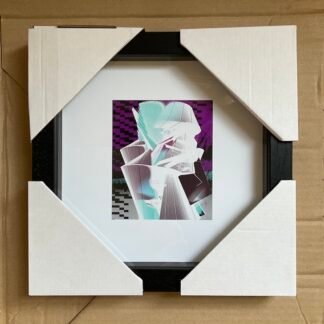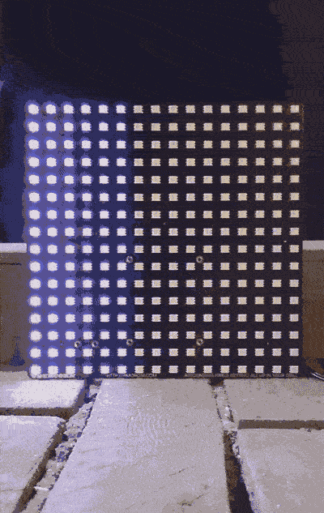
Part of: The Semiotics of Video Games exhibition.

Text by Mathias Jansson
In the paper The Collapse and Reconstitution of the Cinematic Narrative: Interactivity vs. Immersion in Game Worlds, Otto Lehto wonders what a game is and comes up with the following observation: “The game narrative needs to be ‘written’ (played) before it can be ‘read’ (interpreted). Games provide fluidity of interactive immersion: the interface as the place of the merger between the player and the game.”
RPG Paint (2004) by Guthrie Lonergan is a video game that fits into Lehto’s description. It is a simple game – knight fighting the dark forces, mixed with the interface from the Paint software. The player can not only fight his enemies, but also change the graphics during the game play by using tools from the Paint iconography: an eraser, a hand, and a bucket. In that aspect, the RPG Paint game reminds me of simulation games such as The Sims, in which you are creating the game while you are playing. In semiotic terms, this means that the player is both author and reader at the same time. In literature, Brecht talks about the “Verfremdungesffekt”, when you break the epic illusion on stage. We could also mention meta-literature, when the process of writing is visible and questioned in the narration. In the same way, RPG Paint is problematic when it comes to immersion for the player. How can he simultaneously be absorbed by the narration while creating it?
RPG Paint, Guthrie Lonergan, 2004
The artist Robert Overweg calls himself a virtual photographer, because he takes photos from the virtual worlds he visits. But is it the artist Robert Overweg who takes the pictures? Isn’t it his avatar, his virtual alias that sees trough the camera lens? The artist is controlling the avatar and is aware that he is moving in a virtual world – does he experience total immersion? Probably not, because in Overweg’s works The end of the virtual world (2010) and Glitches (2010), the virtual worlds appear to us (and to the avatar) with glitches and errors that threaten to break the illusion. Game restrictions are also taken into pictures, such as the borders from which the avatar can’t go any further. To make a thought experiment, imagine one second that humans travel through space, and after passing Pluto, they find there is an invisible barrier they cannot pass. If humankind found such an invisible barrier after Pluto, would we still believe that our reality was real?

The facade (from half-life 2), Glitches, Robert Overweg, 2010
Next theme: Intelligibility in video games
1 | 2 | 3 | 4 | 5 | 6 | 7 | 8 | 9 | 10
Related Artworks
-
 CHAOS – bug #2 (limited edition of 10 framed prints)60,00 €
CHAOS – bug #2 (limited edition of 10 framed prints)60,00 € -
 Circulation #2450,00 €
Circulation #2450,00 € -
 Pas Perdus (Fall into Step)1200,00 €
Pas Perdus (Fall into Step)1200,00 €